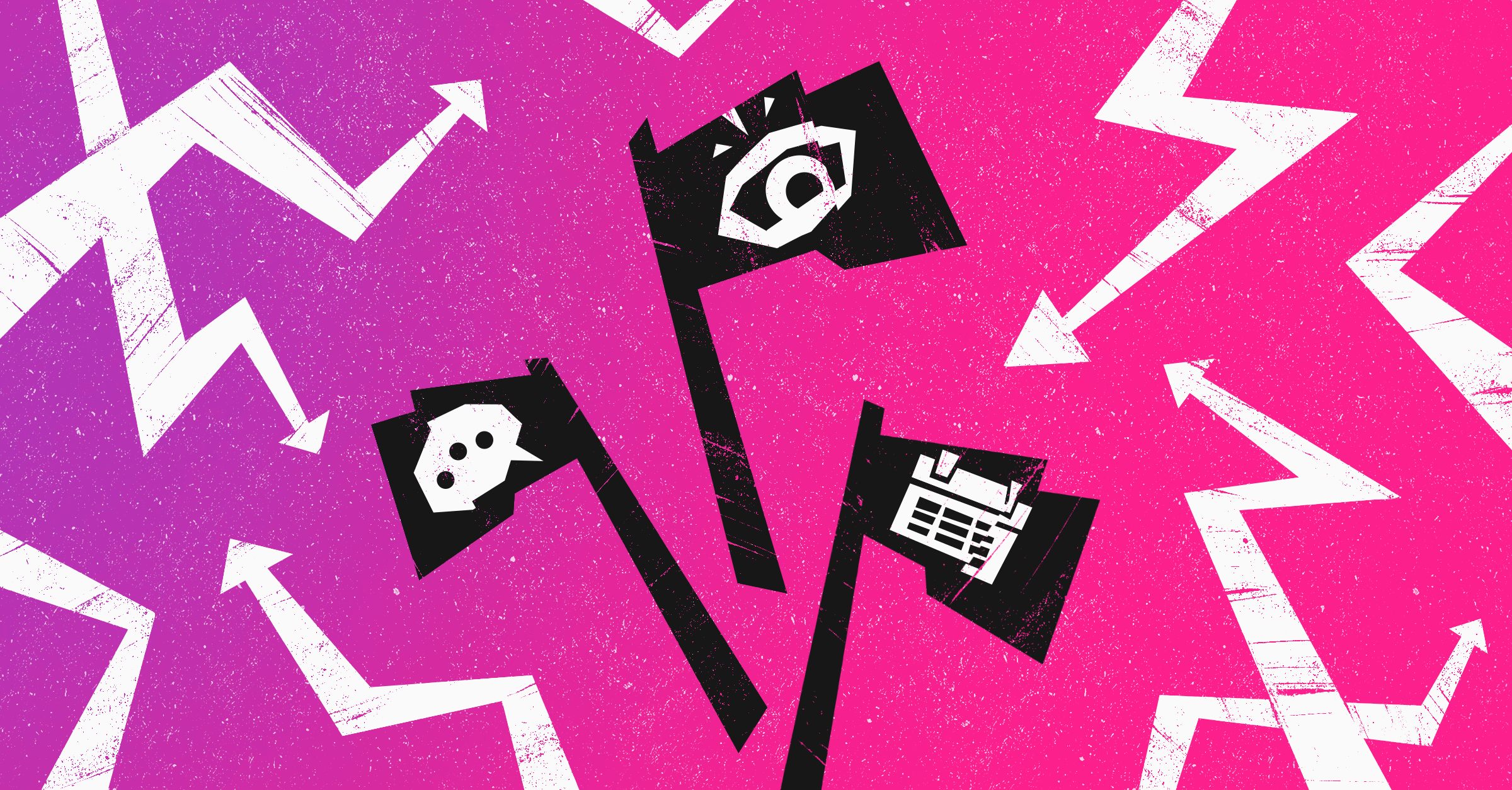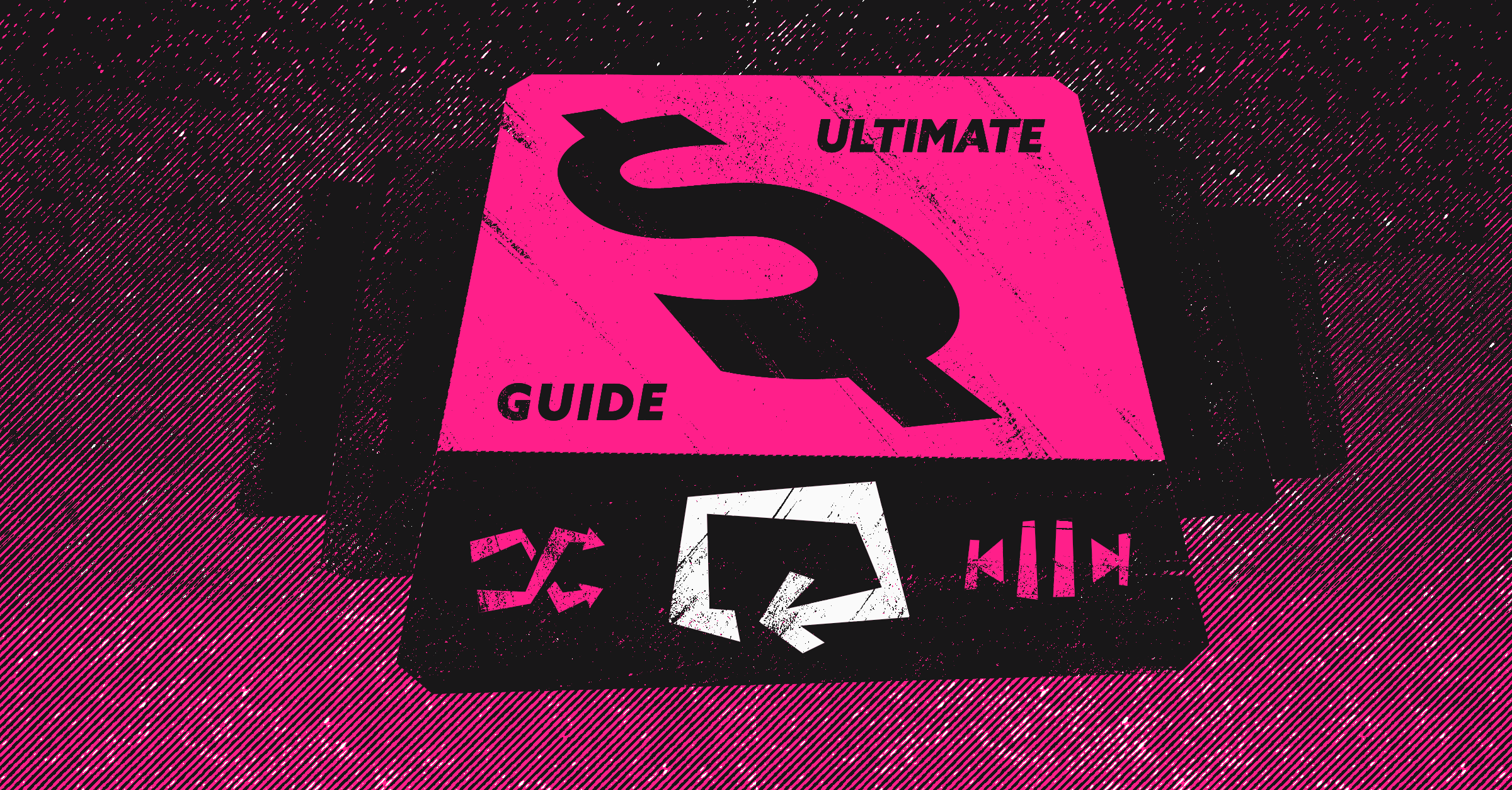
Naturally, the number one priority of any sales team is to sell. It’s to convert leads into loyal customers and exceed quota, quarter after quarter. Sure, this is easier said than done. But with proper sales pipeline management, you’re able to spend less time managing your opportunities—which means more time selling to them.
When you’re managing your sales pipeline effectively, you can budget your time better, improve forecasting accuracy, and avoid dropping the ball with prospects. The result? Closing more deals and reaching more goals.
With quota attainment plummeting across nearly every sales role in 2023, there’s never been a better time to double down on pipeline management. And we’re here to show you how.
What is a sales pipeline?
Your sales pipeline is a visual representation of your sales process. Sales teams use pipelines to create an overview of where every prospect is in the sales cycle. If you’ve ever used Salesforce, you’re probably familiar with this screen and its depiction of the sales pipeline: Discovery, Proposal, Negotiation, and Closed.
Dashboards like these offer a simple way for Sales to see the big picture.
However, a sales pipeline is more than a way to visualize progress. When used correctly, a pipeline allows reps to accurately assess a contact’s interest and readiness for a deal. At the same time, it lets sales managers review revenue estimates, understand team performance, and more.
Sales pipeline vs. sales funnel
Before we move on, we need to make this distinction clear. While many think the difference between a sales funnel and a sales pipeline boils down to semantics, the two are not the same.
The sales funnel is more of a theoretical framework that describes the customer’s “mental stages” of buying. You might remember these from Marketing 101—Awareness, Consideration, Decision, and so on.
The sales pipeline is your prospects’ real-world journey through these mental stages. It’s a sales team’s view of deals in progress and steps to take (i.e. an opportunity record), and it can encompass vital data like dollar values and probability metrics (how likely an opportunity is to close).
Understanding both concepts is necessary, but the stages of the sales pipeline should matter most to sales teams.
Stages of the sales pipeline
So, because your pipeline is an indicator of the overall health of your sales efforts, all players have to be clear on your sales pipeline stages.
Everyone—the reps, the sales manager, the VPs, and beyond—must understand what each stage means, how much pipeline there is, and the exit criteria for the next stage.
When you’re not all-in on a clearly defined sales process, problems arise in and out of your sales pipeline review meetings. If reps are using stages differently across the team, necessary info will be missing, customers will be left hanging, and your sales target will remain unreached.
On the other hand, with a nailed-down process and the sales pipeline management software to back it up, everyone involved can properly assess each lead and determine if they’re ready to move through the pipeline.
Now, every organization has (or should have) its own formal sales process based on its product and audience. A SaaS company is unlikely to use the same strategies as, say, an industrial grease supplier. However, it’s always a variation on the same basic journey.
Here’s how we’d define that journey through the pipeline.
Meeting Scheduled
Also called Demo Scheduled, the Meeting Scheduled stage is the first step in any standardized sales process. At this stage, a prospect has simply decided to meet with you and learn more about your product.
The exit criterion for this stage is equally simple: The meeting or demo takes place (no-shows don’t count!).
Qualification
During and after your initial meeting, you’ll engage in Lead Qualification, working to see if your prospect is a fit for your product or service. Educational materials like ebooks, white papers, and webinars are excellent tools here. But don’t just look at the lead’s Industry and Title: ask questions to uncover whether they’re having a business problem that you help solve and whether they have access to a buying authority (even if they’re not the primary decision maker).
Ideally, qualification standards should be designed alongside marketing and sales development representatives (SDRs). When sales and marketing are aligned, lead quality increases, and annual revenue grows in tandem. Plus, alignment brings a competitive edge in a world where nearly 90% of marketing and sales professionals state their counterparts aren’t connected in strategy or content.
To exit the qualification stage, you need to be reasonably confident that your prospect will move through the pipeline. (It’s also worth noting that this stage is skippable if you can tell an opp is qualified from the get-go.)
Discovery
By now, you’re convinced there’s a potential deal in the works. In the Discovery stage, your goal is to learn more about your prospect.
This part of the process will entail a deep dive into their:
- Needs
- Pain points
- Goals
- Stakeholders
To comfortably exit this stage, you need to understand enough about the prospect’s wants and needs to send over a tailor-made proposal.
Proposal
In the Proposal stage, you’ve laid out why your solution is the best option, and now you’re waiting for a response.
But this shouldn’t be idle waiting. Throughout this stage, continue to follow up and tweak the proposal as needed to move the needle toward acceptance.
In terms of exit criteria, the prospect has to name you as a viable contender. They may not be a sure shot yet, but they’ve indicated that the proposal meets their requirements.
Negotiation
When you’ve hit the Negotiation stage, it’s time to work through the nitty-gritty of the contract—the pricing, terms, and other redlines—to reach a deal.
If your team has a “deal desk” (a team focused on high-value contracts), this is the time for them—and leadership—to get involved.
Why? Because opps in the Negotiation stage have the highest possibility of closing.
With that in mind, contacts should only ever reach this stage if they represent a real, valid opportunity. Otherwise, your forecast could wind up artificially inflated.
As for exiting this stage, there are three possibilities:
- A hard yes – The prospect has officially signed a contract. Nice!
- A hard no – The prospect has explicitly said your solution won’t work.
- Ghosting – The prospect has stopped responding to your follow-ups. After three tries, you can consider this a “soft no”. It’s best to move this opp to Closed-Lost and try again later rather than keep them in limbo in the Negotiation stage.
Closed-Won/Closed-Lost
Prospects you’ve successfully landed will move to the Closed-Won stage, at which point you’ll proceed to order fulfillment.
Prospects that have declined to purchase—at any stage of the pipeline—move into the Closed-Lost bucket.
However, Closed-Lost doesn’t have to be the end. A qualified contact remains qualified, and it’s possible to re-engage them in the future and move them back through the pipeline.
How to build a sales pipeline
Of course, full-team clarity on the sales pipeline stages is only half the battle. To reach your quotas, you need to actively build and grow your pipeline.
And that takes consistent work. Even if you have inbound leads pouring in, we recommend spending at least half an hour per day—or half a day per week—on prospecting.
However, that’s just the beginning. Below are some more tips for building a healthy sales pipeline.
Handle inbound leads excellently
If you are lucky enough to have leads coming to you through your contact forms or ads, making a stellar first impression with them is the easiest way to draw them further into your pipeline.
Be friendly, timely, and informative with your first message, and above all, ensure they can easily schedule the initial meeting.
The other place to bulk up your pipeline is LinkedIn—and there, too, you’ll want to engage expertly with prospective buyers. Maintain a consistent LinkedIn presence, posting regularly while responding thoughtfully to all comments.
Stick to the sales stages
As your pipeline fills up, it may be tempting to rush things along, skip stages, or even misrepresent where a prospect is to make your efforts look better.
Resist the urge. Be honest when recording a prospect’s progress, and always follow the sales stages in your pipeline. A sales pipeline product can help make this a regular part of your daily grind, too.
The easiest way to stay on track is to hold regular (and productive) pipeline review meetings, discuss opps with leadership, and strategize on how to push priority deals forward. When everyone sticks to the stages and adheres to the exit criteria, accountability stays high, and forecasting remains accurate.
Build trust with prospects and management
It may seem obvious, but you need to build a trusting relationship with prospects in order to move them through your pipeline. At the same time, a pipeline functions best when there’s also trust between reps and managers.
With that said, in both internal and external interactions, it’s vital to:
- Follow up when you say you’ll follow up
- Make good on your word
- Add value beyond the sales process
When you do, you’ll be amazed at how much smoother the sales pipeline moves.
Update your sales process regularly
Most importantly, remember that a sales pipeline is a malleable work in progress. Nothing is set in stone—especially if it’s not working—so don’t be afraid to discuss what’s not working with your team, offer feedback to your RevOps or SalesOps team, and make process changes that better fit reality.
The number one goal is to ensure all the stages line up with how your customers are actually buying – not how you want them to buy.
For the clearest possible picture of the buyer’s journey, involve all the following teams in any sales pipeline shuffle:
- Sale leadership
- Sales ops
- Reps
- Marketing
- Customer service
How to maintain a clean sales pipeline
We know how time-consuming it is to get data into your CRM (Seriously, how many times has your boss asked you to update Salesforce this week already?) And we don’t want to sound like a broken record, but you don’t want to build any old sales pipeline. You want a clean, simple-to-navigate one—and that starts with effective pipeline management.
Here are a few ways you can manage your sales pipeline efficiently.
Include mandatory fields
One way to guarantee seamless sales processes is to make essential fields mandatory. If a sales rep can’t move a lead from one stage to the next without adding the necessary info, you won’t have to worry about missing data. Put simply, it’s a must.
With sales pipeline templates—specifically Dooly Templates—you’ll never have to think twice about if you’re asking the right questions and getting the right customer data for the deal stage. And when the data is clean, the pipeline is, too.
Make use of key pipeline metrics
Speaking of data, let’s not forget about sales metrics—your other best friend in a spotless pipeline. By turning your hard-to-quantify sales activities into concrete numbers, you can easily gauge what’s working and what needs to change.
In every sales pipeline report, consider touching on some key metrics, including:
- Pipeline Velocity – How fast are opps moving through the pipeline? If things seem slow, can you remove friction anywhere to make the journey easier for potential customers?
- Pipeline Coverage – Do you have enough prospects in the pipeline to reach your quota? In general, you want 4 to 5 times more opps than you’d need to fulfill your remaining quota so that your closed and lost deals won’t keep you from hitting your target.
- Win Rate by Segment – What percentage of your deals are ending in sales, and what are the variables behind those deals? By tracking the best-performing reps, products, lead sources, and more, you can shift your focus to what’s bringing you success.
When you track and respond to these interconnected sales pipeline metrics, you can keep your pipeline clean, reach your sales targets, and boost revenue growth.
With pipeline management, everyone wins
Every sales team has a pipeline. It’s what you do with that pipeline that separates the top sellers from the quota-missers.
By meticulously managing your pipeline through strict adherence to stages and reliance on data, you can create a better sales experience for everyone. Reps will have an easier time selling, and managers will have a firmer grasp on the team’s progress.
Best of all, your potential customers will enjoy a smoother ride through your pipeline. In the long term, your well-managed pipeline can help you close more deals faster and predict those wins with greater accuracy.
So, if it’s been a while since you’ve assessed your sales pipeline, we think it’s about time you had another look. Take the time to optimize your pipeline, and you’ll be rewarded with sustained success.
How Dooly can help
Proper sales pipeline management can streamline your selling, but maintaining the pipeline can be time-consuming in and of itself.
That’s where sales tools like Dooly come in.
With Dooly, you can automate the most tedious parts of your processes. From 1-click pipeline updates to auto-synced meeting notes, your tasks have never been easier.
Plus, Dooly integrates into the tools you’re already using—including Salesforce, Slack, and Outreach—so you can up your sales game without the steep learning curve.
Stop spending time on the nuts and bolts of pipeline management and focus on building relationships and closing deals.
Join the thousands of top-performing AEs who use Dooly every day to stay more organized, instantly update their pipeline, and spend more time selling instead of mindless admin work. Try Dooly free, no credit card required. Or, Request a demo to speak with a Dooly product expert right now.


